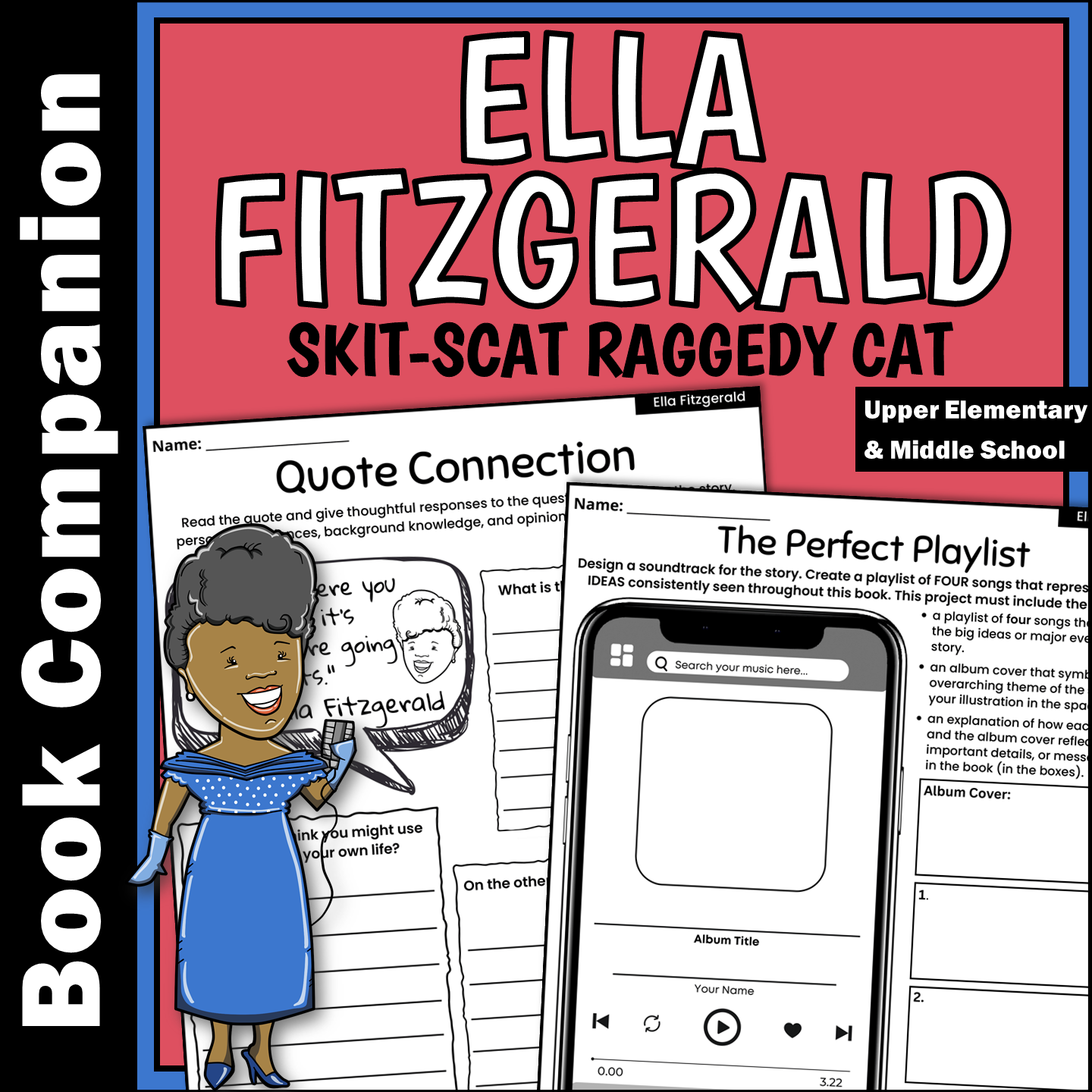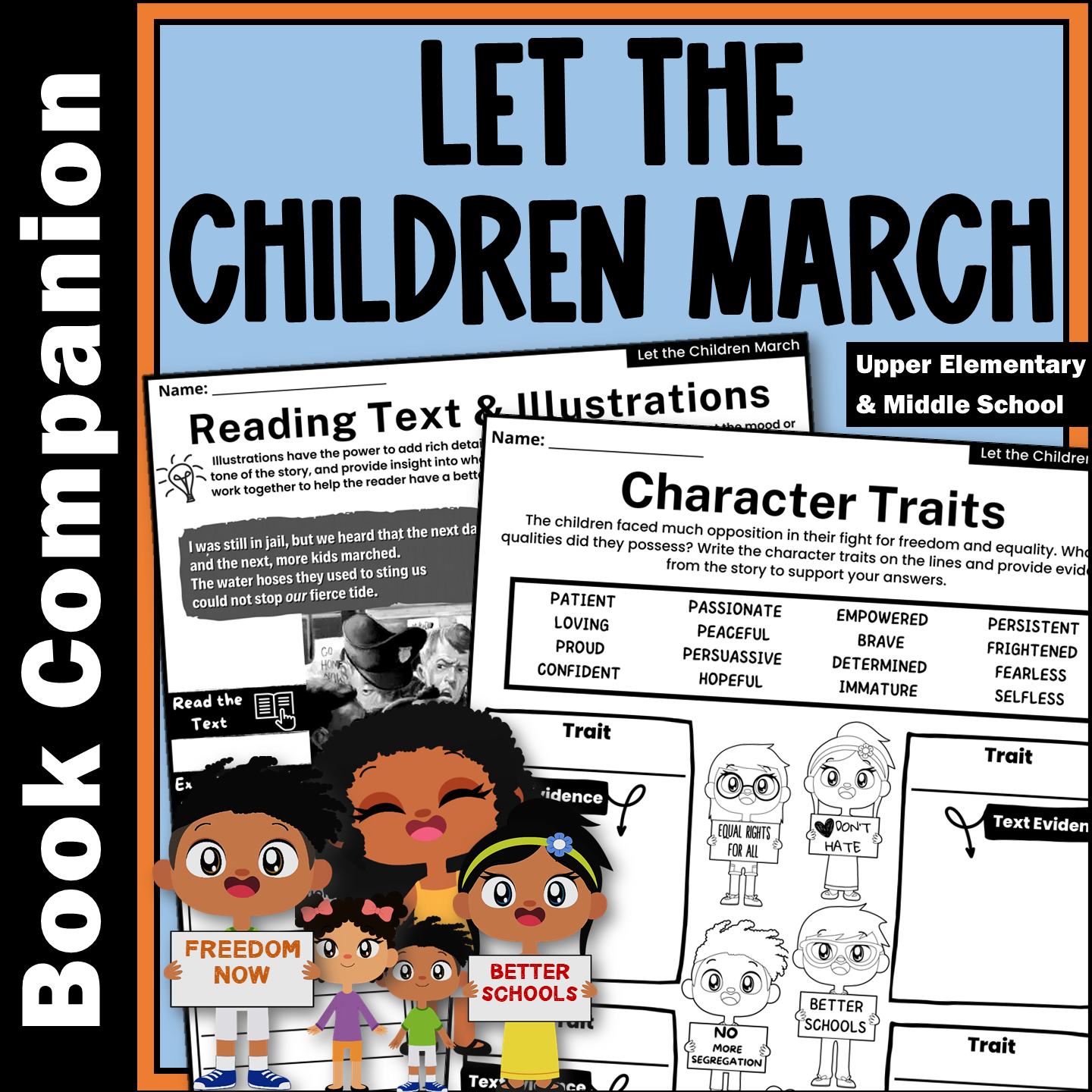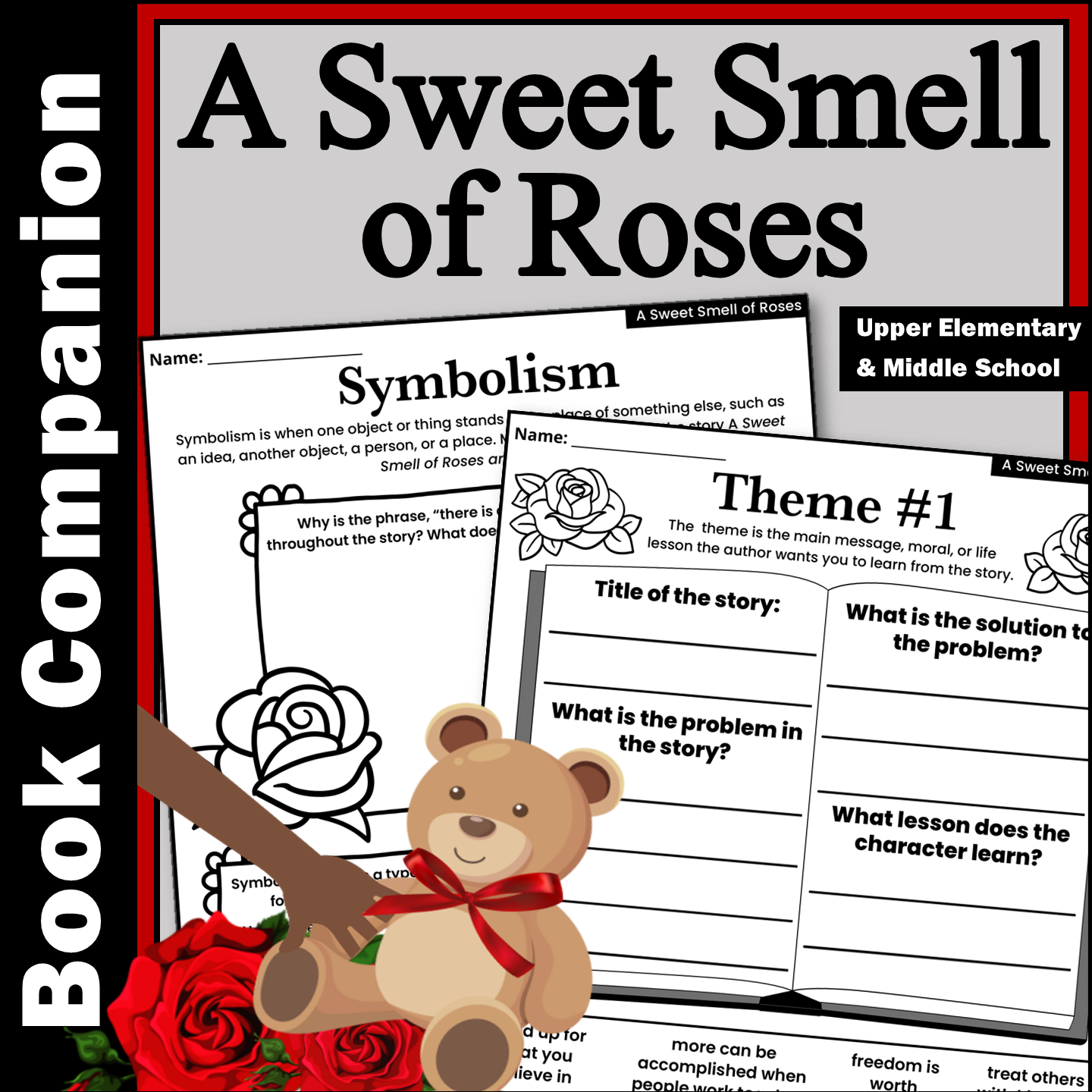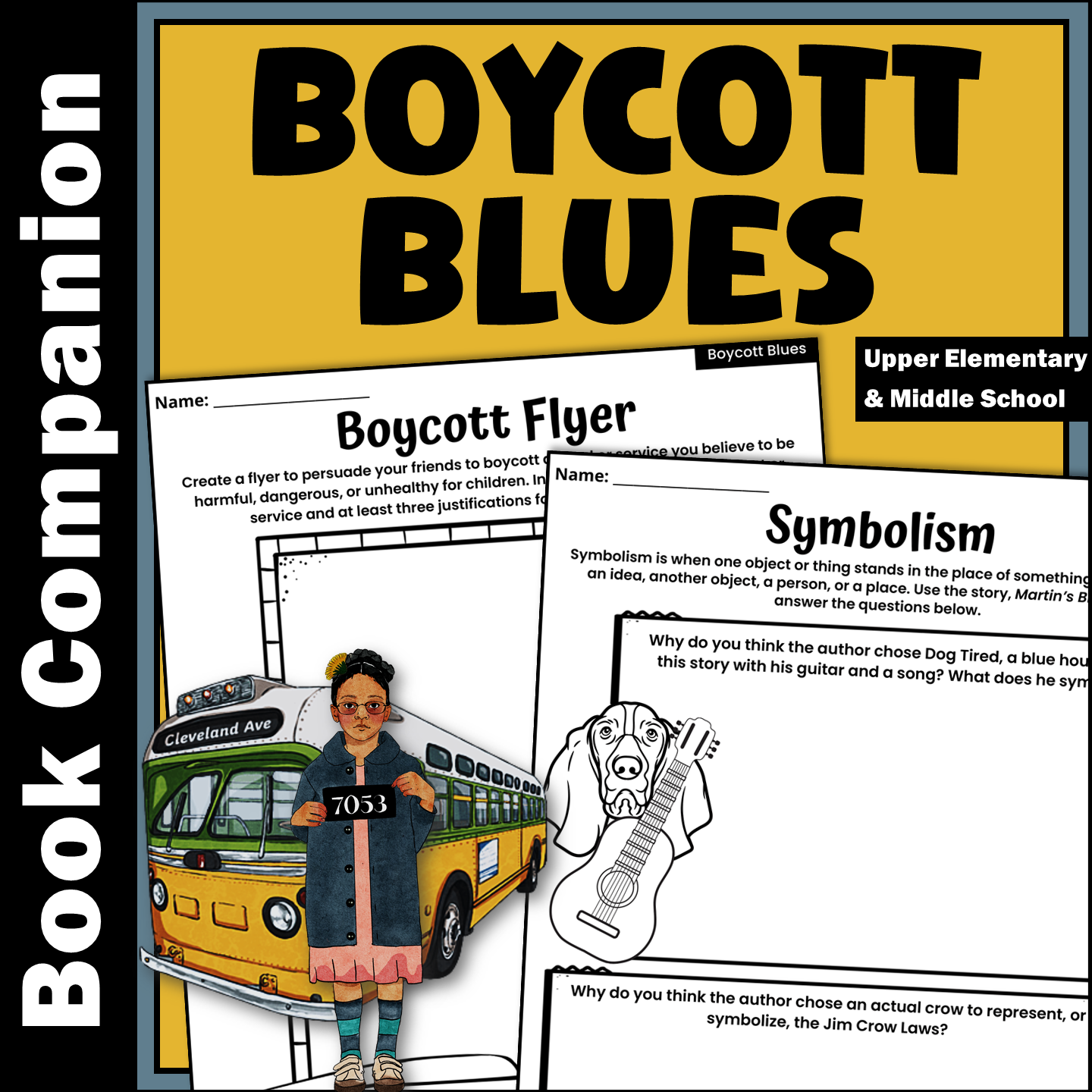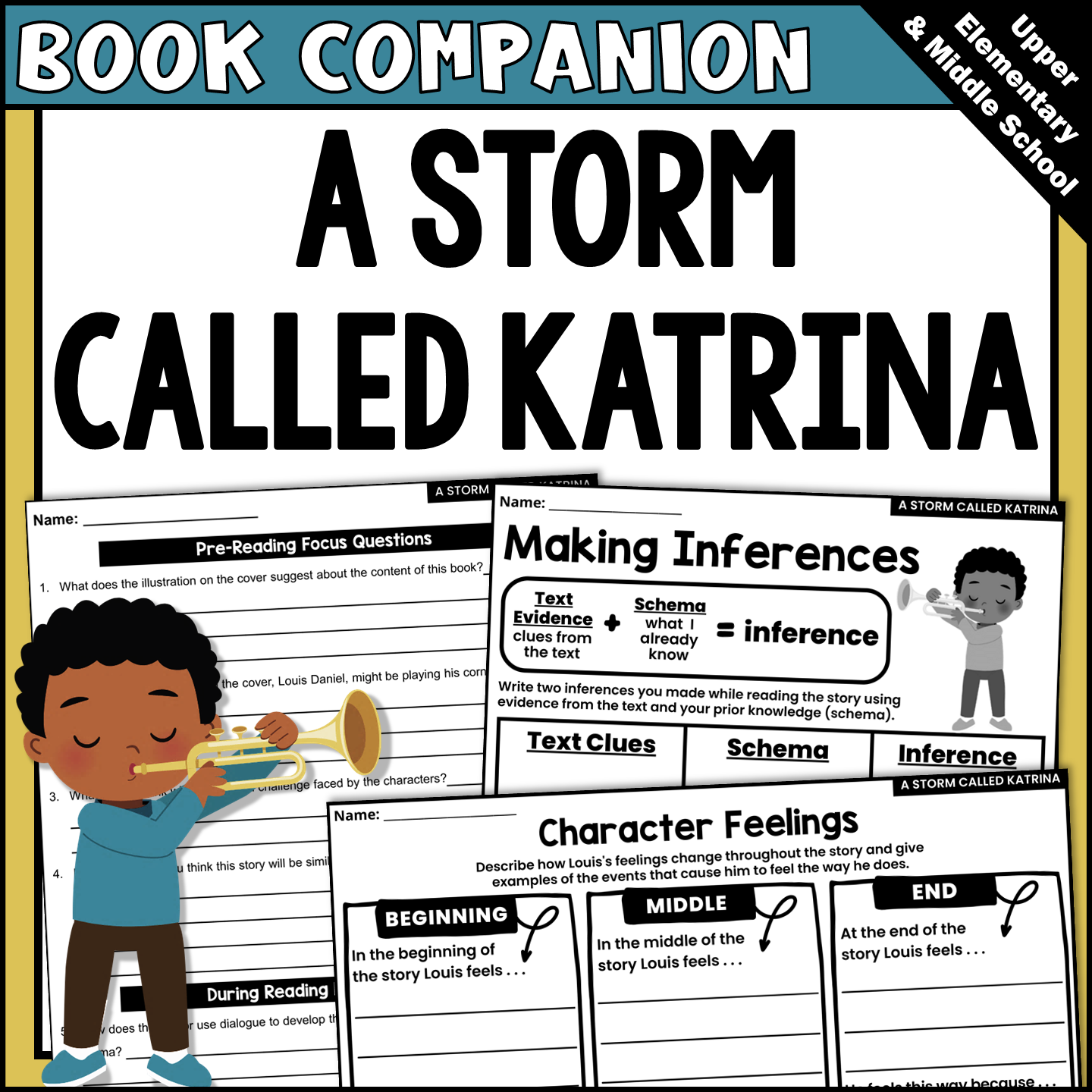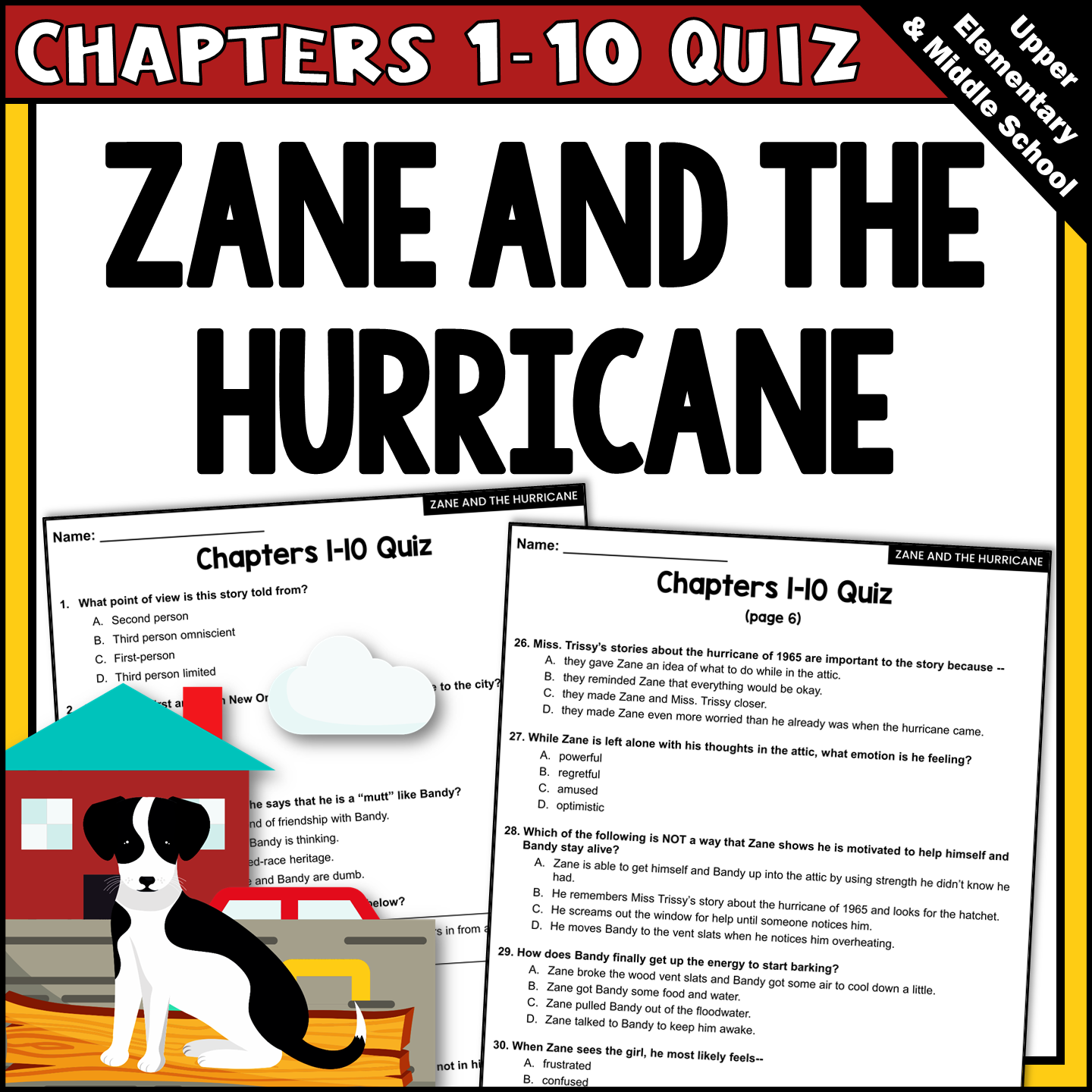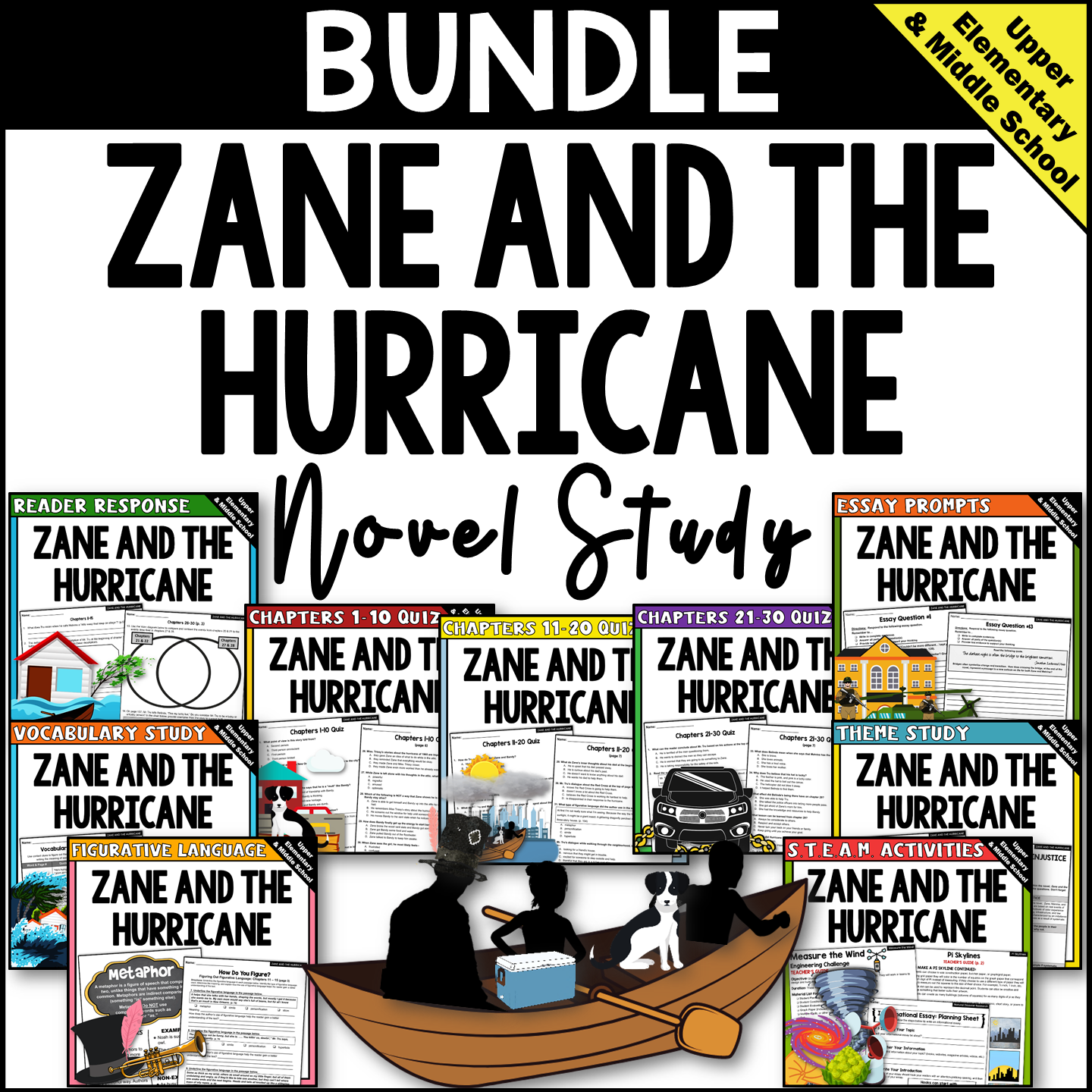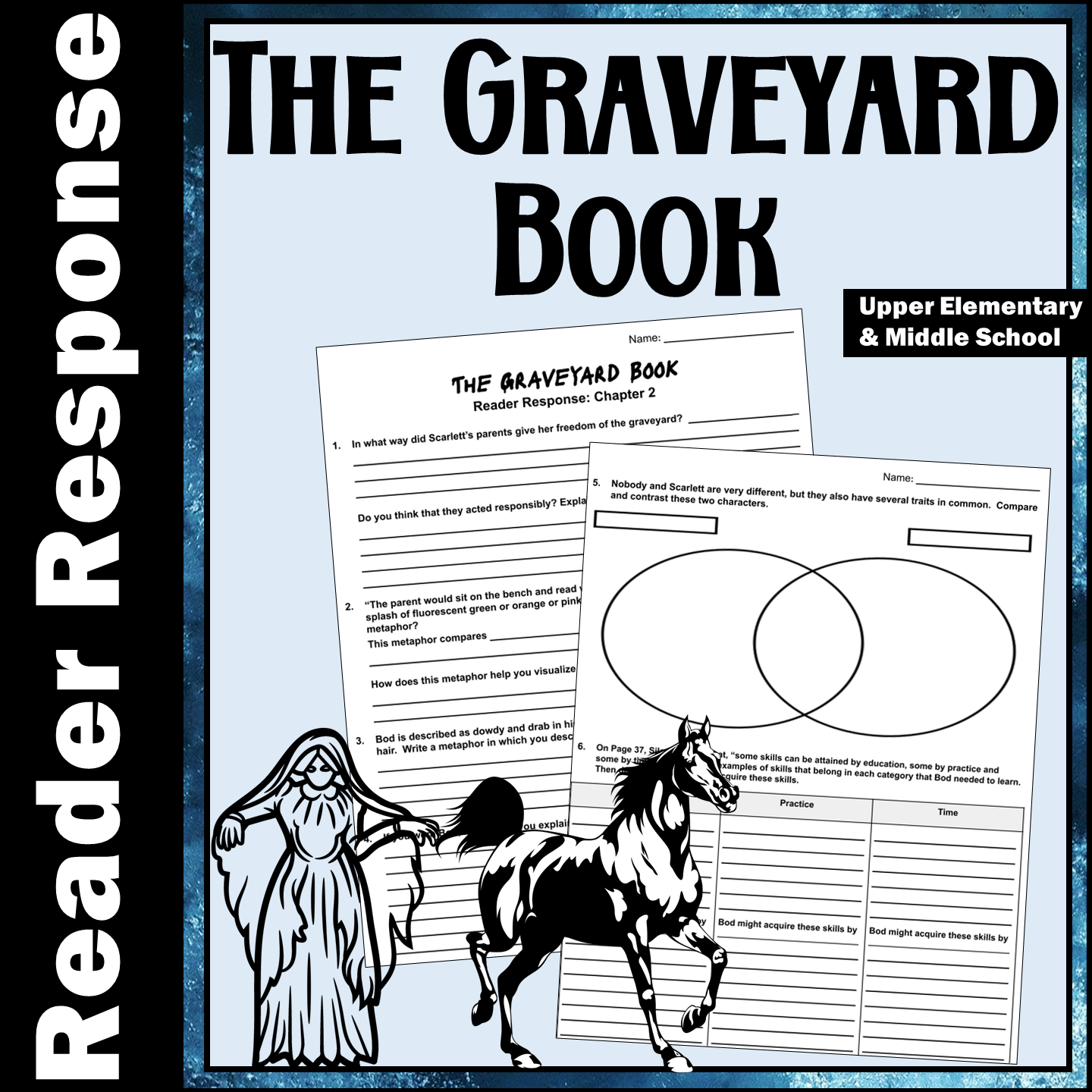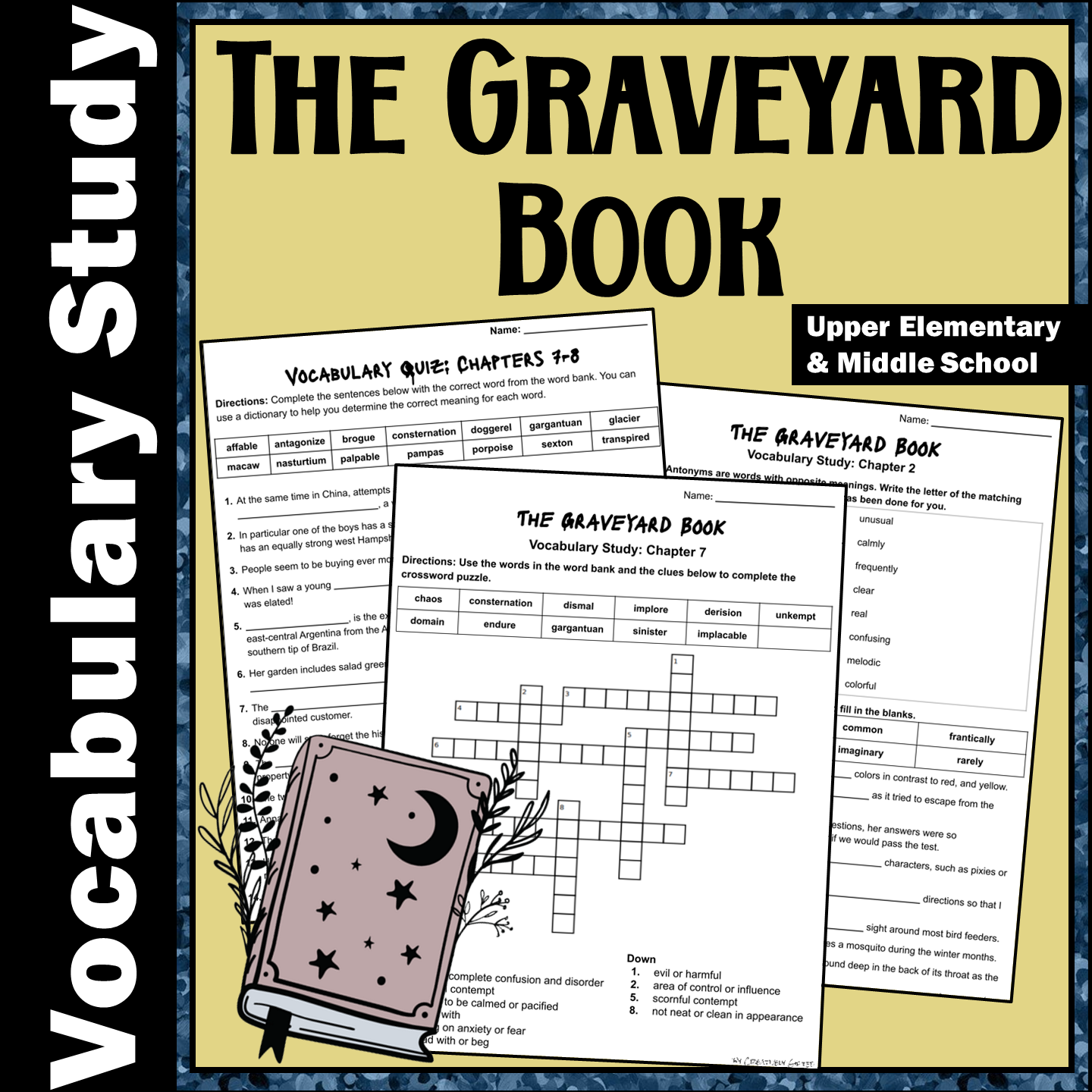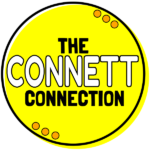Bundled products

Abuela's Weave Interactive Read-Aloud Activities and Book Companion
$3.50
This picture book companion is a complete supplemental resource for the book Abuela's Weave, by Omar S. Casteneda.
With 38 print-and-go reading activities to choose from, this resource is ideal for customizing learning to your student's specific needs and academic abilities. Students will identify story elements, determine the theme, analyze characters, compare and contrast, make predictions, inferences, and connections, answer questions that require them to think within and beyond the text, and so much more!
Students will love the engaging and fun activities, and you will appreciate the time saved hunting for high-level resources to teach reading concepts that students frequently struggle with. The activities provided are designed to enable students to apply higher-level thinking skills, encourage them to provide text evidence to support their thinking, and challenge them to express their own thoughts and/or perspectives.
⭐️This Resource Includes:⭐️
◾ Making Predictions: Students make predictions about the text before reading the book.
◾ Judging by the Cover: Students examine the front cover of the book and answer questions.
◾ Story Elements: Students fill in the boxes with words & pictures to represent the story elements.
◾ Sequencing: Students will retell & illustrate the important parts of the story.
◾ Recalling Events in Chronological Order: Students describe and illustrate four major events in the story in chronological order.
◾ Summary: Students complete the Somebody, Wanted, Because, But, So graphic organizer and write a summary of the story.
◾ Story Event Sort: Students will describe a scene or event from the story that fits into each of the categories & explain how the event made them feel & how it relates to the category.
◾ Making Connections: Students make connections to events from the story.
◾ Visualizing: Students read the text from the story and draw a picture of what they visualized.
◾ Making Inferences: Students use clues & schema to make inferences while reading the story.
◾ Character Traits (Esperanza): Students choose 2 character traits that describe the character and provide examples from the book to support each trait.
◾ Character Traits (Esperanza & Abuela): Students choose 2 character traits that describe each character and provide examples from the book to support each trait.
◾ Character Inside & Out (Esperanza): Students include details from the story to describe what the character says, thinks, does, and feels.
◾ Character Inside & Out (Abuela): Students include details from the story to describe what the character says, thinks, does, and feels.
◾ Character Feelings (Esperanza): Students describe how the character’s feelings change throughout the story & give examples of the events that cause them to feel the way they do.
◾ Character Feelings (Abuela): Students describe how the character’s feelings change throughout the story & give examples of the events that cause them to feel the way they do.
◾ Character Development (Esperanza): Students select character traits that best describe the character at different times throughout the story and give examples from the book to support the traits they choose.
◾ Character Development (Abuela): Students select character traits that best describe the character at different times throughout the story and give examples from the book to support the traits they choose.
◾ Character Change (Esperanza): Students will explain how the character changed from the beginning to the end of the story and describe the events that caused the change to happen.
◾ Overcoming Obstacles: Students will choose two challenges Esperanza faced in the story, describe her responses, and identify the character traits that developed as a result.
◾ Sketch a Scene From the Story: Students will draw a scene from the story and describe what happened there and why it was important to the plot.
◾ Setting the Scene: Students identify three different settings in the story and explain how they know the setting changed.
◾ Compare & Contrast: Students compare & contrast Esperanza’s home in Santa Cruz to the city.
◾ Thinking About the Text: Students will answer the questions about the story & include examples from the text to support their answers.
◾ Thinking Beyond the Text: Students will answer the questions about the story & include examples from the text to support their answers.
◾ Theme: Students answer the questions to determine which theme best fits the story and provide text evidence to support their choice.
◾ Sensory Details: Students describe Esperanza’s experience at the market using the five senses.
◾ Author's Message: Students describe four important events from the story, put them in chronological order, and answer the questions about the author's message.
◾ Trip to the Market: Students recap Esperanza and Abuela’s' trip to the market with pictures, captions, and details from the story to highlight the most important or memorable parts.
◾ Dear Diary: Students will imagine themselves as a character from the story and write a diary entry about a key event.
◾ Tapestry Design: Students design a tapestry that represents them or their culture.
◾ Advertisement: Students create an advertisement to convince people shopping at the market to buy Abuela’s tapestries.
◾ Caught on Social Media: Students imagine they are a character in the story and create a social media post sharing one event, including a caption, name, location, likes, and a hashtag.
◾ 2 - Crossword Puzzles: Students use the clues to fill in the crossword puzzles (ANSWER KEYS INCLUDED).
◾ 2 - Word Search Puzzles: Students use the clues to find the hidden words in the puzzles (ANSWER KEYS INCLUDED).
◾ Wait... There's More!: Students will write about what happens next in the story.
◾ Book Review: Students rate and review the book.
◾ All About Guatemala: Students will research to learn more about the country of Guatemala.
This resource is for extension read-aloud activities only. The book is not included.

Roller Coaster Interactive Read-Aloud Activities and Book Companion
$3.50
This picture book companion is a complete supplemental resource for the book Roller Coaster, by Maria Frazee.
With 32 print-and-go reading activities to choose from, this resource is ideal for customizing learning to your student's specific needs and academic abilities. Students will identify story elements, determine the theme, analyze characters, compare and contrast, make predictions, inferences, and connections, answer questions that require them to think within and beyond the text, and so much more!
Students will love the engaging and fun activities, and you will appreciate the time saved hunting for high-level resources to teach reading concepts that students frequently struggle with. The activities provided are designed to enable students to apply higher-level thinking skills, encourage them to provide text evidence to support their thinking, and challenge them to express their own thoughts and/or perspectives.
⭐️This Resource Includes:⭐️
◾ Making Predictions: Students will make predictions about the text before reading the book.
◾ Story Elements: Students fill in the boxes with words & pictures to represent the story elements.
◾ Sequencing: Students will retell & illustrate the important parts of the story.
◾ Recalling Events in Chronological Order: Students describe and illustrate four major events in the story in chronological order.
◾ Summary: Students complete the Somebody, Wanted, Because, But, So graphic organizer and write a summary of the story.
◾ Story Event Sort: Students will describe a scene or event from the story that fits into each of the categories & explain how the event made them feel & how it relates to the category.
◾ Comic Recall: Students will draw three scenes from the story, complete with speech bubbles, to tell the story's beginning, middle, and end with text and illustrations.
◾ Making Connections: Students make connections to an event from the story.
◾ Making Inferences: Students use clues & schema to make inferences while reading the story.
◾ Character Traits: Students choose 2 character traits that describe the character and provide examples from the book to support each trait.
◾ Character Inside & Out: Students include details from the story to describe what the character says, thinks, does, and feels.
◾ Character Feelings: Students describe how the character’s feelings change throughout the story & give examples of the events that cause them to feel the way they do.
◾ Character Development: Students select character traits that best describe the character at different times throughout the story and give examples from the book to support the traits they choose.
◾ Character Perspective: Students will describe how they think the character feels about riding the roller coaster based on their facial expressions in the pictures.
◾ Sketch a Scene From the Story: Students will draw a scene from the story and describe what happened there and why it was important to the plot.
◾ Setting the Scene: Students identify three different settings in the story and explain how they know the setting changed.
◾ Before & After: Students draw a picture and describe how the girl felt before riding the roller coaster and how she felt after riding it.
◾ Notice & Note: Students will notice and take notes on the important details the author includes in the text & illustrations.
◾ Sensory Details: Students use all five senses to describe the experience of riding a roller coaster.
◾ Theme: Students answer the questions to determine which theme best fits the story and provide text evidence to support their choice.
◾ 3-2-1: Students will identify three feelings or emotions that people might experience before, during, or after riding a roller coaster, describe two things they notice about the people as they get off the roller coaster, and choose one word that best describes riding a roller coaster and explain why.
◾ Author's Message: Students describe four important events from the story and put them in chronological order. Then answer the questions about the author's message.
◾ Thinking About the Text: Students will answer the questions about the story & include examples from the text to support their answers.
◾ Thinking Beyond the Text: Students will answer the questions about the story & include examples from the text to support their answers.
◾ Ride the Roller Coaster: Students design a flyer to persuade people to experience the thrill of the roller coaster at the amusement park.
◾ Dear Diary: Students will imagine themselves as a character from the story and write a diary entry about a key event.
◾ Trying Something New: Students make connections to the story by answering questions about a time they tried something new.
◾ Crossword Puzzle: Students use the clues to fill in the crossword puzzle (ANSWER KEY INCLUDED).
◾ Word Search Puzzle: Students use the clues to find the hidden words in the puzzle (ANSWER KEY INCLUDED).
◾ Wait... There's More!: Students will write about what happens next in the story.
◾ Book Review: Students rate and review the book.
◾ Onomatopoeia ABCs: Students create a list of onomatopoeias to use in their own writing.
This resource is for extension read-aloud activities only. The book is not included.

Suki's Kimono Interactive Read-Aloud Activities and Book Companion
$3.50
This picture book companion is a complete supplemental resource for the book Suki's Kimono by Chieri Uegaki.
With 28 print-and-go reading activities to choose from, this resource is ideal for customizing learning to your student's specific needs and academic abilities. Students will identify story elements, determine the theme, analyze characters, compare and contrast, make predictions, inferences, and connections, answer questions that require them to think within and beyond the text, and so much more!
Students will love the engaging and fun activities, and you will appreciate the time saved hunting for high-level resources to teach reading concepts that students frequently struggle with. The activities provided are designed to enable students to apply higher-level thinking skills, encourage them to provide text evidence to support their thinking, and challenge them to express their own thoughts and/or perspectives.
⭐️This Resource Includes:⭐️
◾ Making Predictions: Students will make predictions about the text before reading the book.
◾ Story Elements: Students fill in the boxes with words & pictures to represent the story elements.
◾ Sequencing: Students will retell & illustrate the important parts of the story.
◾ Recalling Events in Chronological Order: Students describe and illustrate four major events in the story in chronological order.
◾ Summary: Students complete the Somebody, Wanted, Because, But, So graphic organizer and write a summary of the story.
◾ Story Event Sort: Students will describe a scene or event from the story that fits into each of the categories & explain how the event made them feel & how it relates to the category.
◾ Making Connections: Students make connections to an event from the story.
◾ Making Inferences: Students use clues & schema to make inferences while reading the story.
◾ Character Traits: Students choose 2 character traits that describe the character and provide examples from the book to support each trait.
◾ Character Traits: Students choose 4 character traits that describe the character and provide examples from the book to support each trait.
◾ Character Inside & Out: Students include details from the story to describe what the character says, thinks, does, and feels.
◾ Character Feelings: Students describe how the character’s feelings change throughout the story & give examples of the events that cause them to feel the way they do.
◾ Character Development: Students select character traits that best describe the character at different times throughout the story and give examples from the book to support the traits they choose.
◾ Character Perspective: Students will use the illustrations and what they remember from the story to answer the questions about character viewpoints.
◾ Sketch a Scene From the Story: Students will draw a scene from the story and describe what happened there and why it was important to the plot.
◾ Setting the Scene: Students identify three different settings in the story and explain how they know the setting changed.
◾ Before and After: Students draw a picture and describe what Suki's sisters thought about her wearing the kimono before school. Then, draw another picture and describe what they probably thought after school.
◾ Theme: Students answer the questions to determine which theme best fits the story and provide text evidence to support their choice.
◾ What Are They Thinking: Students use the illustrations and what they know from the story to fill in the thought bubbles with what they think the characters are thinking.
◾ Thinking About the Text: Students will answer the questions about the story & include examples from the text to support their answers.
◾ Thinking Beyond the Text: Students will answer the questions about the story & include examples from the text to support their answers.
◾ Author's Message: Students describe four important events from the story and put them in chronological order, then answer the questions about the author's message.
◾ Dear Diary: Students will imagine themselves as a character from the story and write a diary entry about a key event.
◾ Dare to Be Different: Students respond to questions about being different.
◾ Crossword Puzzle: Students use the clues to complete the crossword puzzle (ANSWER KEY INCLUDED).
◾ Word Search Puzzle: Students use the clues to find the hidden words in the puzzle (ANSWER KEY INCLUDED).
◾ Wait... There's More!: Students will write about what happens next in the story.
◾ Book Review: Students rate and review the book.
◾ All About Japan: Students will research to learn more about Japan and complete the brochure.
This resource is for extension read-aloud activities only. The book is not included.

Mirette on the High Wire Interactive Read-Aloud Activities and Book Companion
$3.50
This picture book companion is a complete supplemental resource for the book Mirette on the High Wire, by Emily Arnold McCully.
With 34 print-and-go reading activities to choose from, this resource is ideal for customizing learning to your student's specific needs and academic abilities. Students will identify story elements, determine the theme, analyze characters, compare and contrast, make predictions, inferences, and connections, answer questions that require them to think within and beyond the text, and so much more!
Students will love the engaging and fun activities, and you will appreciate the time saved hunting for high-level resources to teach reading concepts that students frequently struggle with. The activities provided are designed to enable students to apply higher-level thinking skills, encourage them to provide text evidence to support their thinking, and challenge them to express their own thoughts and/or perspectives.
⭐️This Resource Includes:⭐️
◾ Making Predictions: Students make predictions about the text before reading the book.
◾ Story Elements: Students fill in the boxes with words & pictures to represent the story elements.
◾ Sequencing: Students will retell & illustrate the important parts of the story.
◾ Recalling Events in Chronological Order: Students describe and illustrate four major events in the story in chronological order.
◾ Summary: Students complete the Somebody, Wanted, Because, But, So graphic organizer and write a summary of the story.
◾ Story Event Sort: Students will describe a scene or event from the story that fits into each of the categories & explain how the event made them feel & how it relates to the category.
◾ Making Connections: Students make connections to events from the story.
◾ Making Inferences: Students use clues & schema to make inferences while reading the story.
◾ Character Traits (Mirette): Students choose 2 character traits that describe the character and provide examples from the book to support each trait.
◾ Character Traits (Mirette & Bellini): Students choose 2 character traits that describe each character and provide examples from the book to support each trait.
◾ Character Inside & Out (Mirette): Students include details from the story to describe what the character says, thinks, does, and feels.
◾ Character Inside & Out (Bellini): Students include details from the story to describe what the character says, thinks, does, and feels.
◾ Character Feelings (Mirette): Students describe how the character’s feelings change throughout the story & give examples of the events that cause them to feel the way they do.
◾ Character Feelings (Bellini): Students describe how the character’s feelings change throughout the story & give examples of the events that cause them to feel the way they do.
◾ Character Development (Mirette): Students select character traits that best describe the character at different times throughout the story and give examples from the book to support the traits they choose.
◾ Character Development (Bellini): Students select character traits that best describe the character at different times throughout the story and give examples from the book to support the traits they choose.
◾ Character Change (Bellini): Students will explain how the character changed from the beginning to the end of the story and describe the events that caused the change to happen.
◾ Overcoming Obstacles: Students will choose two challenges Mirette and Bellini faced in the story, describe their responses, and identify the character traits that developed as a result.
◾ Sketch a Scene From the Story: Students will draw a scene from the story and describe what happened there and why it was important to the plot.
◾ Setting the Scene: Students identify three different settings in the story and explain how they know the setting changed.
◾ Figuring Out Figurative Language: Students read the phrases from the story and identify what two things are being compared. Then, they explain what it means and why the author included it in the story (ANSWER KEY INCLUDED).
◾ Theme: Students answer the questions to determine which theme best fits the story and provide text evidence to support their choice.
◾ Thinking About the Text: Students will answer the questions about the story & include examples from the text to support their answers.
◾ Thinking Beyond the Text: Students will answer the questions about the story & include examples from the text to support their answers.
◾ Dear Diary: Students will imagine themselves as a character from the story and write a diary entry about a key event.
◾ Dear Mirette and Bellini: Students will imagine they're the little girl at the end of the story and write a letter to Mirette and Bellini explaining how their poster inspired them to overcome a fear.
◾ Showing Off on Social Media: Students imagine they are a character in the story and create a social media post sharing one event, including a caption, name, location, likes, and a hashtag.
◾ Prep for a Podcast: Students will prepare for an interview with Mirette and Bellini for a podcast about their upcoming show by writing 3 questions and answers for each character.
◾ Learning Something New: Students make connections to the story by answering questions about a time they learned something new.
◾ Crossword Puzzle: Students use the clues to fill in the crossword puzzle (ANSWER KEY INCLUDED).
◾ Word Search Puzzle: Students use the clues to find the hidden words in the puzzle (ANSWER KEY INCLUDED).
◾ Wait... There's More!: Students will write about what happens next in the story.
◾ Book Review: Students rate and review the book.
◾ Marie Spelterini: Brave Tightrope Walker (Reading Passage): Students will read the passage and answer the questions (ANSWER KEY INCLUDED).
This resource is for extension read-aloud activities only. The book is not included.

Courage by Bernard Waber Interactive Read-Aloud Activities and Book Companion
$3.50
This picture book companion is a complete supplemental resource for the book Courage, by Bernard Waber.
With 21 print-and-go reading activities to choose from, this resource is ideal for customizing learning to your student's specific needs and academic abilities. Students will identify story elements, determine the theme, analyze metaphors, compare and contrast, make predictions, inferences, and connections, answer questions that require them to think within and beyond the text, and so much more!
Students will love the engaging and fun activities, and you will appreciate the time saved hunting for high-level resources to teach reading concepts that students frequently struggle with. The activities provided are designed to enable students to apply higher-level thinking skills, encourage them to provide text evidence to support their thinking, and challenge them to express their own thoughts and/or perspectives.
⭐️This Resource Includes:⭐️
◾ Making Predictions: Students make predictions about the text before reading the book.
◾ Making Connections: Students make connections to an event from the story.
◾ Making Inferences: Students make inferences while reading the story.
◾ Making Sense of Metaphors: Students Identify what two things are being compared in each metaphor, and explain why the author chose to compare those two things.
◾ Thinking About the Text: Students will answer the questions about the story & include examples from the text to support their answers.
◾ Thinking Beyond the Text: Students will answer the questions about the story & include examples from the text to support their answers.
◾ Theme: Students answer the questions to determine which theme best fits the story and provide text evidence to support their choice.
◾ Everyday Courage vs. Amazing Courage: Students will decide if the examples of courage in the story are something that happens every day or something really amazing and think of their own example for each kind of courage.
◾ Courage Is: Students explain why the author thinks courage is similar to each experience.
◾ Notice & Note: Students will notice and take notes on the important details the author includes in the text & illustrations.
◾ Discovering Courage through the Five Senses: Students use the five senses to describe courage.
◾ Theme: Students answer the questions to determine which theme best fits the story and provide text evidence to support their choice.
◾ 3-2-1: Students give three examples of having courage, describe two ways that they show courage, and choose one word that best describes courage and explain why.
◾ Author's Message: Students describe four important events from the story and put them in chronological order. Then answer the questions about the author's message.
◾ Courageous ABCs: Students will write something that requires courage for each letter of the alphabet.
◾ Courage Caught on Social Media: Students create a social media post sharing an example of courage.
◾ Crossword Puzzle: Students use the clues to complete the crossword puzzle (ANSWER KEY INCLUDED).
◾ Word Search Puzzle: Students use the clues to find the hidden words in the puzzle (ANSWER KEY INCLUDED).
◾ Book Review: Students rate and review the book.
◾ New Book Pages: Students will think of different ways people show courage in everyday life and in unusual situations. Then, write a sentence about each one and draw a picture to go with their writing.
◾ Having Courage: Students write about a time they showed courage.
This resource is for extension read-aloud activities only. The book is not included.
Details
Grade
2nd, 3rd, 4th
Resource Type
Activities, Organizers, Printables
Pages
99+ Pages
Product
Digital
Subject
Reading & Literacy, ELA
Languages
English
Standard
Common Core English Language Arts Standards
Description
This interactive read-aloud BUNDLE includes OVER 150 no-prep activities that are ideal for customizing learning to your student's specific needs and academic abilities. The included activities were created to be used with the following interactive read-aloud picture books in the Fountas & Pinnell text set, Facing Challenges.
◾ Courage, by Bernard Waber
◾ Roller Coaster, by Maria Frazee
◾ Mirette on the High Wire, by Emily Arnold McCully
◾ Suki's Kimono, by Chieri Uegaki
◾ Abuela's Weave, Omar S. Casteneda
The included reading activities can be used as a supplemental resource during your interactive read-aloud lessons. Most of the lessons are best suited for students in the 2nd and 3rd grades. However, some of the included activities focus on applying crucial reading skills, digging deeper into the text, and critical thinking, so they will be great for gifted and talented students, enrichment activities, or for any of your students who are ready for a challenge. Quick and easy setup, plus clear student directions, make these activities perfect for centers or substitute days, too!
Students will investigate characters, identify story elements, determine the theme, practice plotting story events, compare and contrast, find cause-and-effect relationships, make predictions, inferences, and connections, answer questions that require them to think beyond the text, and much more!
Students will love the engaging and fun activities, and you will appreciate the time saved hunting for high-level resources to teach reading concepts that students frequently struggle with. The activities provided are designed to enable students to apply higher-level thinking skills, encourage them to provide text evidence to support their thinking, and challenge them to express their own thoughts and/or perspectives.
You will get TONS of print-and-go activities for each picture book, saving you valuable time you already don't have to spare.
⭐Need ideas for different ways you can implement these activities?
◾ Focus on different reading skills each day for targeted instruction, and have students complete a corresponding printable to check for understanding.
◾ During centers, students can independently read the story again and complete an activity that reviews a previously taught concept.
◾ Work with students on a reading concept they struggle with during guided reading or strategy groups.
◾ Students work with a partner or in literature circles to complete additional reading activities.
This resource is for extension read-aloud activities only.
The book is not included.
◾ Courage, by Bernard Waber
◾ Roller Coaster, by Maria Frazee
◾ Mirette on the High Wire, by Emily Arnold McCully
◾ Suki's Kimono, by Chieri Uegaki
◾ Abuela's Weave, Omar S. Casteneda
The included reading activities can be used as a supplemental resource during your interactive read-aloud lessons. Most of the lessons are best suited for students in the 2nd and 3rd grades. However, some of the included activities focus on applying crucial reading skills, digging deeper into the text, and critical thinking, so they will be great for gifted and talented students, enrichment activities, or for any of your students who are ready for a challenge. Quick and easy setup, plus clear student directions, make these activities perfect for centers or substitute days, too!
Students will investigate characters, identify story elements, determine the theme, practice plotting story events, compare and contrast, find cause-and-effect relationships, make predictions, inferences, and connections, answer questions that require them to think beyond the text, and much more!
Students will love the engaging and fun activities, and you will appreciate the time saved hunting for high-level resources to teach reading concepts that students frequently struggle with. The activities provided are designed to enable students to apply higher-level thinking skills, encourage them to provide text evidence to support their thinking, and challenge them to express their own thoughts and/or perspectives.
You will get TONS of print-and-go activities for each picture book, saving you valuable time you already don't have to spare.
⭐Need ideas for different ways you can implement these activities?
◾ Focus on different reading skills each day for targeted instruction, and have students complete a corresponding printable to check for understanding.
◾ During centers, students can independently read the story again and complete an activity that reviews a previously taught concept.
◾ Work with students on a reading concept they struggle with during guided reading or strategy groups.
◾ Students work with a partner or in literature circles to complete additional reading activities.
This resource is for extension read-aloud activities only.
The book is not included.
This interactive read-aloud BUNDLE includes OVER 150 no-prep activities that are ideal for customizing learning to your student's specific needs and academic abilities. The included activities were created to be used with the following interactive read-aloud picture books in the... more










